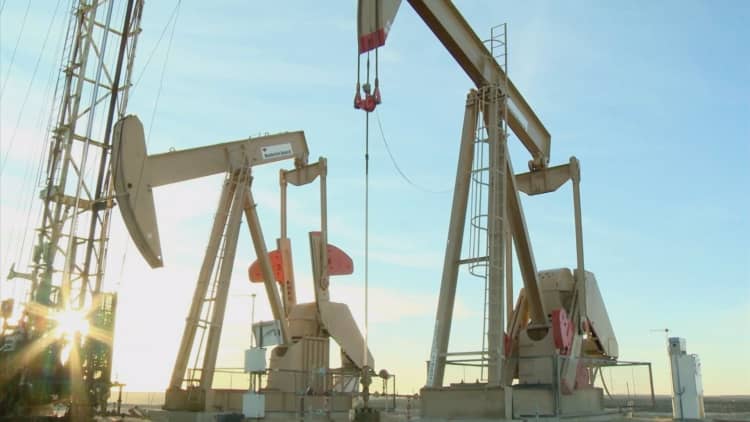
Oil prices fell Wednesday after an unseasonal growth in crude stockpiles offset the second-biggest weekly draw in U.S. gasoline this summer.
Data showing Saudi Arabia pumping oil at record high volumes in July added to worries about a global crude glut.
U.S. crude inventories gained 1.1 million barrels in the week ended Aug. 5, the U.S. Energy Information Administration (EIA) reported, in a third straight week of builds that surprised the market. Analysts polled by Reuters had expected a 1.0 million-barrel crude draw instead.
The EIA also reported that U.S. gasoline stocks fell 2.8 million barrels last week in the second-biggest weekly draw for gasoline since mid-April. The draw, coming despite U.S. East Coast refinery runs hitting 2011 lows, exceeded expectations for a gasoline stockpile drop of only 1.1 million barrels.
International benchmark Brent crude futures were down $1.06, or 2.3 percent, at $43.93 per barrel. U.S. West Texas Intermediate (WTI) crude oil futures settled at $41.71 a barrel, down 2.48 percent, or $1.06.
"We do feel that any further strength in the spot price will be met with selling," said Tariq Zahir, trader in crude oil spreads at Tyche Capital Advisors in New York. "At this time of year, we should be drawing down in crude inventories, and we are still building."
U.S. gasoline futures fell 3 percent, after initially gaining 1 percent on the gasoline draw data.
WTI had its sharpest monthly fall in a year in July, dropping 14 percent, after runaway gasoline demand for the summer still fell short of refiner production. Storage tanks worldwide are nearly full with oil products while refiner profits in Singapore have hit two-year lows.
The EIA added to the bearish supply-demand picture on Tuesday with a forecast that showed it had scaled back estimates for U.S. crude oil output declines in 2016.
The outlook for oil also took a hit on Wednesday after No. 1 crude exporter Saudi Arabia told the Organization of the Petroleum Exporting Countries (OPEC) that the kingdom's output reached a record high of 10.67 million barrels-per-day (bpd) in July.
Some remained positive on oil prices though, citing Venezuela's renewed efforts to get OPEC to cooperate with other oil producers on the market after a failed effort in April.
"The mere suggestion of OPEC working in the background on a price support initiative should be enough to hold the market in the $43-$45 levels in the near term," said Salvatore Recco, who helps oversee about $2 billion of client money, including in oil, at Gravity Investments in Denver.

When producers last held such talks in April, OPEC members failed to agree on any measures.
"Renewed attempts at verbal intervention by OPEC will help bolster oil market sentiment, although the group will struggle to rebuild its role as a backstop to Brent," oil analysts at BMI Research said in a note to clients.
The U.S. Energy Information Administration added to the market's unease earlier on Tuesday when it forecast a smaller decline in U.S. crude oil production in 2016 than it projected a month ago as drilling activity picks up.
The agency now expects U.S. oil output to fall by 700,000 barrels per day (bpd) this year to 8.73 million bpd, compared with the 820,000-bpd drop it previously forecast.
A global products glut that has led storage tanks from Houston to Singapore to reach near capacity is also weighing on oil prices, as analysts warn that only large-scale refinery run cuts can clear the excess.
In Singapore, oil refining profits dropped to two-year lows on Wednesday, in the latest sign that the industry is pumping too much fuel for the market to absorb.

